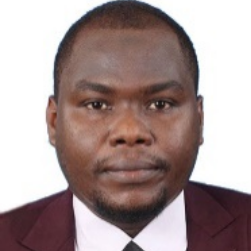
Mohammed S. M. Gismalla
Work place: Center for Communication Systems and Sensing, King Fahd University of Petroleum and Minerals (KFUPM), Dhahran 31261, Saudi Arabia
E-mail: mohammed.gismalla@kfupm.edu.sa
Website:
Research Interests:
Biography
Mohammed Salih Mohammed Gismalla (Senior Member, IEEE) received a B.Sc. degree (Hons.) in electronic and electrical engineering (communication) from International University of Africa (IUA), Sudan, in 2010, the M.Sc. degree in electronic engineering (communication) from the Sudan University of Science and Technology, in 2015, and the Ph.D. degree in electrical engineering (communication) from the Faculty of Electrical and Electronic Engineering, University Tun Hussein Onn Malaysia (UTHM), Malaysia, in March 2021. From 2010 to 2017, he was a Teaching Assistant and a Lecturer at the Department of Communication Engineering, Faculty of Electronic and Electrical Engineering, IUA, and the University of Bahri. He also worked as a Postdoctoral fellowship at Lightwave Communication Research Group (LCRG), Faculty of Electrical Engineering, University Teknologi Malaysia (UTM) from 2021 to 2023. He is currently a Postdoctoral researcher at Center for Communication Systems and Sensing, King Fahd University of Petroleum and Minerals (KFUPM), Saudi Arabia. His research interests include visible light communication (VLC), free space optics (FSO), communication, device-to-device communication, and B5G/6G networks.
Author Articles
Effect of Line-of-sight Channels on DC-biased Optical Filter Bank Multicarrier Visible Light Communication with Multiple LED Arrays
By Mohammed Ali Asban Rahmat Talib Mohammad Faiz Abdullah Mohammed S. M. Gismalla
DOI: https://doi.org/10.5815/ijcnis.2024.03.02, Pub. Date: 8 Jun. 2024
This paper investigates the impact of propagation delay and channel loss due to the use of multiple LED arrays in visible light communication (VLC) systems based on filter bank multicarrier (FBMC) modulation. FBMC offers greater spectral efficiency, and asynchronous transmission and is a promising alternative scheme to orthogonal frequency division modulation (OFDM). The proposed FBMC model is based on 4-quadrature amplitude modulation (QAM) and 16-QAM formats and uses 100 symbols and 600 input bits per symbol. In this paper, the VLC-FBMC system is designed based on the line-of-sight (LOS) model under the additive white Gaussian noise (AWGN) channel. Comparison analyses between different bit rates in terms of bit error rate (BER), best sampling point, and signal-to-noise ratio (SNR) requirement have been carried out to show the delay and loss effect on communication quality and system performance. The results demonstrate that the proposed FBMC model achieves a bit rate of up to 29.296 Mbit/s with a low BER of 10-3 and less SNR penalty in high QAM formats, demonstrating its potential as a viable alternative to OFDM for future VLC systems.
[...] Read more.Other Articles
Subscribe to receive issue release notifications and newsletters from MECS Press journals